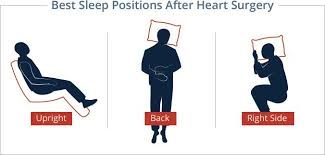Learn what you can (and shouldn’t) do as you heal
When you’ve had heart surgery, you’re likely eager to know when you’ll feel more like yourself again, and when you can get back to doing the things you like to do. But how do you know when you’re ready?
Of course, everyone heals at a different rate and you’ll want to work closely with your doctor, but we can give you a general timeline.
You’ll do most of your healing — about 80 percent— in the first six to eight weeks after surgery. Consider these general guidelines when it comes to what you should and shouldn’t do as your body heals.
From hospital discharge to six weeks:
As you begin getting back into your routine, remember to start with small tasks and take plenty of breaks. Don’t overdo it.
After you leave the hospital, unless your surgeon says otherwise, you may return to activities such as:
- Walking
- Laundry
- Dishes
- Cooking
- Light cleaning
- Climbing stairs
Some things are still off-limits, though. Don’t lift, pull or push anything that weighs more than 10 pounds. It’s too soon to drive, but it’s OK to ride in a car.
Beyond six weeks of recovery:
If the surgeon divided your breastbone during your surgery, it will be about 80 percent healed after six to eight weeks. By that time, you generally are strong enough to get back to normal activities such as driving. You probably also can return to work, unless your job is physically strenuous.
Most important, this is the time to start a cardiac rehabilitation program.
This is a monitored exercise program designed to increase your heart’s endurance. Through cardiac rehabilitation, you can gradually increase your activities, and your doctors will watch your progress closely. You’ll also learn more about how you can change your lifestyle and diet to keep your heart healthy.
Working through a cardiac rehabilitation program is the best way to find out when you are strong enough to resume the more strenuous activities you enjoy.
Beyond 10 weeks:
At 10 weeks post-surgery, in most cases you can resume exercise that you enjoy such as jogging, tennis, skiing or golf.
Regular exercise — 30 minutes, five times per week — that tests your heart’s limits in a controlled manner can go a long way toward keeping your heart healthy.
Give your heart time to heal:
It’s important to remember that not everyone heals at the same rate. Health conditions such as diabetes can increase the time it takes your body to heal after surgery. Complete recovery takes about one full year.
At any phase in your recovery, using common sense is the best way to keep yourself from overdoing it.
If an activity causes pressure or pain, stop. If your breastbone doesn’t heal properly after surgery, it can cause you a lot of pain and complicate the healing process.
If you aren’t sure an activity is safe, check with your surgeon first. Contact your doctor right away if you experience:
- Redness on your chest larger than a quarter or drainage that resembles pus (this might signal an infection)
- A “clicking” noise in your chest when you cough or breathe deeply (this could mean the wire holding your sternum together has broken)
- Abnormal pain
Overall, give yourself time to heal, while gradually doing a little more each week. Continue to work with your doctor until you’re up to speed on your normal activities.



